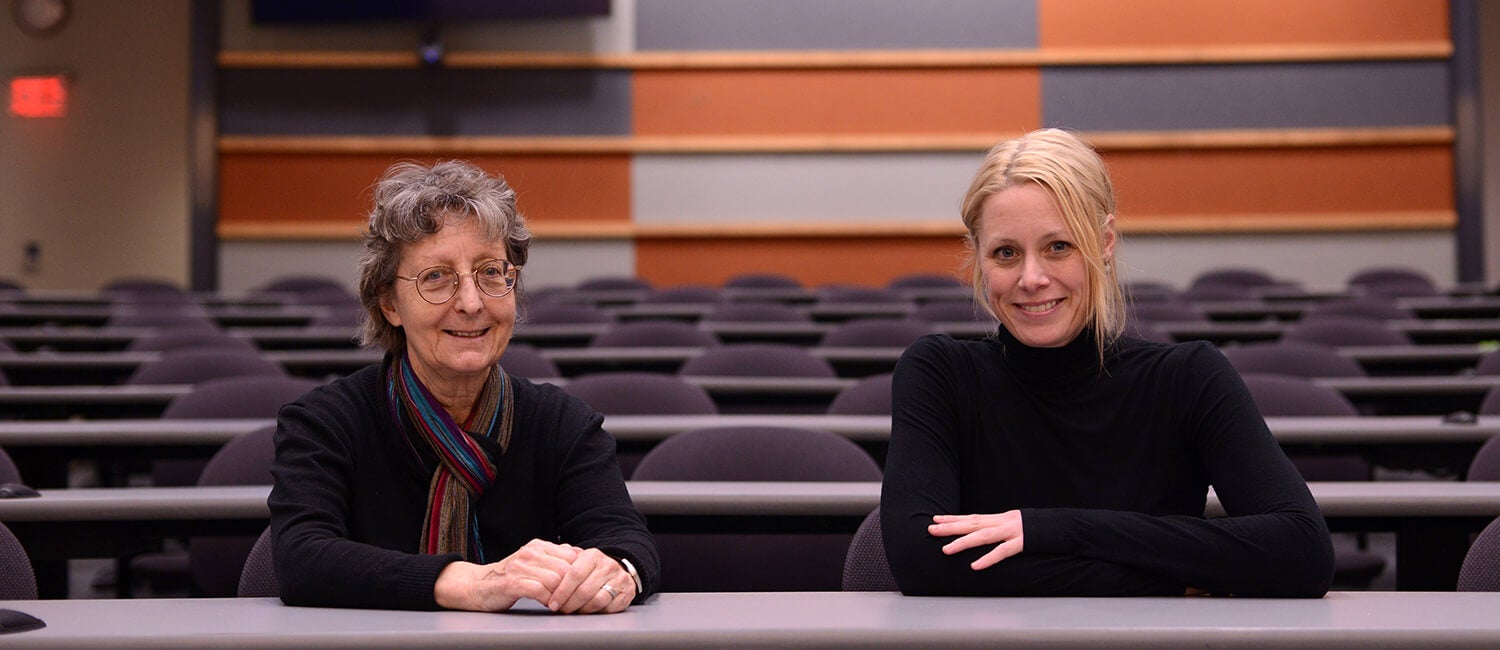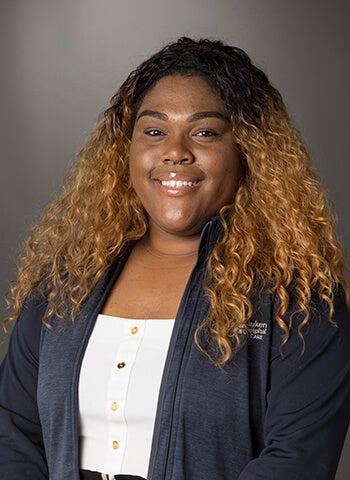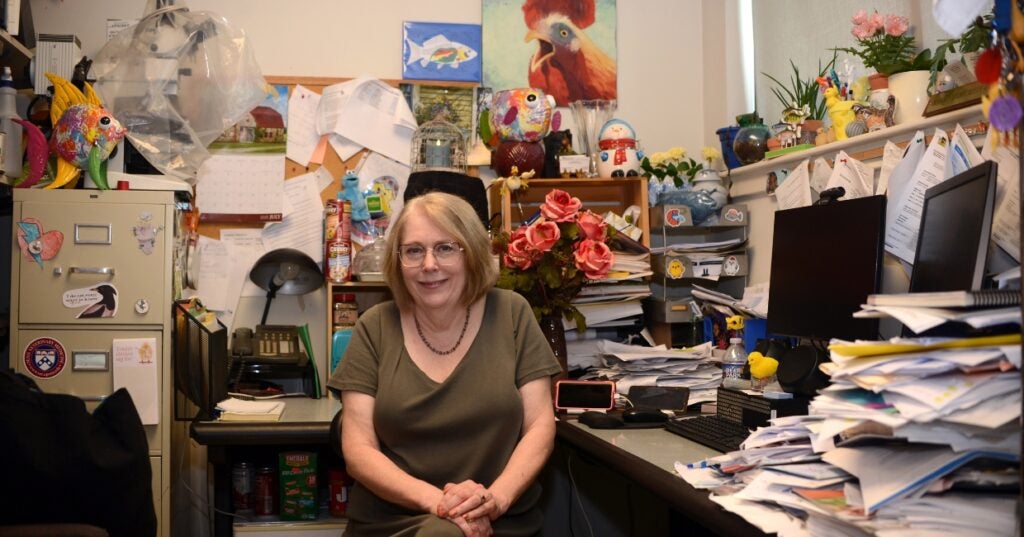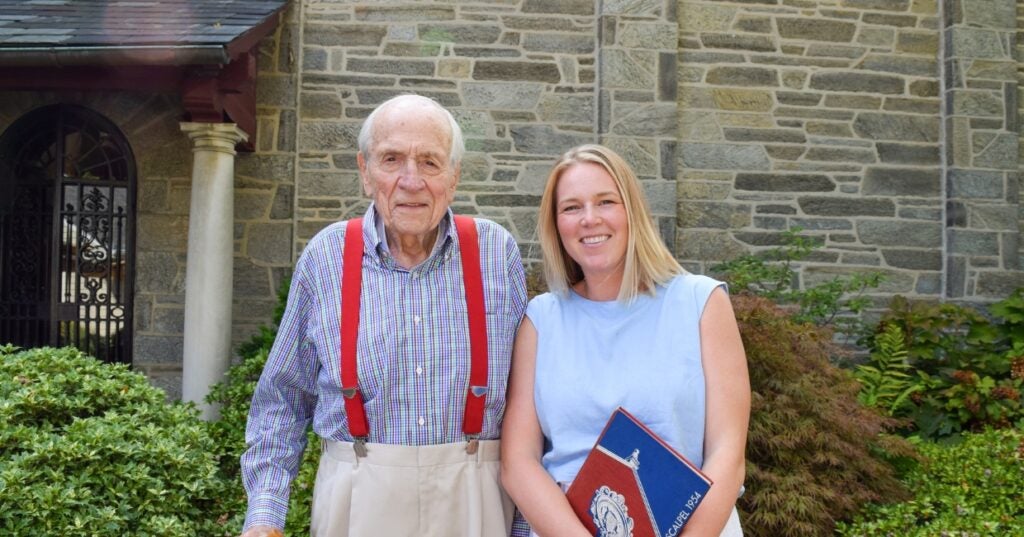Checking In: Year Two of Penn Vet’s New Curriculum

Last year, Penn Vet launched a new curriculum—the first major overhaul of its VMD program since the 1970s. Designed to educate 21st-century veterinarians, the new course of study cultivates a holistic skill set and integrates advanced technologies, hands-on clinical experiences, and critical communication and professional skills.
In year one, students learn about Animals in Health, delving into their form and function within this context. Year two builds on this, presenting the same blocks through the lens of Animals in Disease, looking at prevention, diagnosis, and treatment.
Bellwether featured the new curriculum in the Spring/ Summer 2023 issue, offering faculty and student perspectives on its development and first-year implementation.
In this issue, we catch up with the same faculty and students for their takes on what worked well last year, surprises that emerged along the way, and stand-out highlights of the curriculum rollout’s first days. Speaking from the educator perspective, pictured in the photo on this page, are Kathryn E. Michel, associate dean for education and professor of nutrition, and Amy Durham, assistant dean for education and professor of anatomic pathology. Alexis Massey and Kiera Zimmerman—both V’26—offer student perspectives.
Faculty Perspective
What worked well in year one? Were there any surprises? Have you made changes?
Durham & Michel: The integrated curriculum is working well. We are finding that it engages students by connecting the “ologies” (basic biomedical sciences) with clinically applicable material. It’s been beneficial for everyone that our administrative team provides full-time support to faculty and students. And student focus groups for each course continue to provide valuable—and actionable—feedback on what works and what can work better.
As part of our assessment of the curriculum redesign, which includes the focus groups and student course evaluations, we added faculty course evaluations to the process. This feedback also helps us identify areas needing refining.
Guided by student and faculty input, we have made some changes to learning materials, such as the foundational toolkit, and course design and flow.
Durham & Michel: While the curriculum’s intent was integration, one thing that has surprised me is just how much our faculty has embraced the integration. They really seem to enjoy the opportunity to work across disciplines and areas of expertise. By design, year one course directors include a basic scientist and a clinician—on several occasions, colleagues have said how much they value getting to know each other. They’re gaining an even deeper respect and appreciation for each other’s work. Interdisciplinary teams are often challenging, but Penn Vet’s faculty have risen to the challenge!
Student Perspective
How is year two going, and what have been the highlights so far?

Zimmerman: I’ve appreciated how much year two—which focuses on animal disease— builds on the knowledge base established in year one. We’ve approached the material from a critical thinking and problem-solving perspective as the learning moves from didactic to case studies. I’ve loved getting to learn through real patient case studies.
For example, in dermatology, lecture material is applied to case studies in the lab so we can apply concepts and information. We interact with other students to discuss the cases and come away with a great sense of what it’s like to approach an actual case, consult with others on it, and decide how to approach it with the patient.
Last semester, one of our labs was on surgery. In a mock procedure, we operated on fake intestines and practiced all the surgical skills, from ligating to suturing to working with a partner. I used to be very intimidated by surgery, but now I understand more about why surgeons make the decisions they do. It feels much more attainable and even exciting for me.
Massey: Through the end of year one and into year two, I’ve been so impressed with how open the faculty and administration have been to feedback. They really want to hear about how things are going, and they respond.
The curriculum itself has shifted a lot from last year to this year. It’s very different. The emphasis on studying clinical cases makes me feel like a doctor. I have a real sense of what I’m working toward and am even more eager to get into the clinic with patients.
There have been many great experiences over the past few months. I enjoyed our Hippiatrika lab on communications. We role-played a case and had to deliver a diagnosis, which got into nuances of communication I’d never considered or practiced.
My favorite part of the year is our clinical pathology course and learning to interpret blood work. We’ve reviewed several panels and learned the history of why the animal was getting blood work, putting it all together to understand, again, real-life, non-textbook veterinary medicine.
More from Bellwether

In the Office with Donna Kelly, DVM, MASCP, DACPV, DACVPM
Donna Kelly, DVM, MASCP, DACPV, DACVPM, shares her New Bolton Center office with the campus’s microbiology reference library.

Breaking New Ground: Penn Vet Builds Future-Ready Learning Hub
Set to open in the coming months, the 11,800-square-foot clinical skills center will be the first dedicated classroom space on the Kennett Square campus, ushering in a new era of…

A Love of Animals and the Land
The Penn Vet of Dean Snyder, V’54, was a very different place than today. So was the world.
